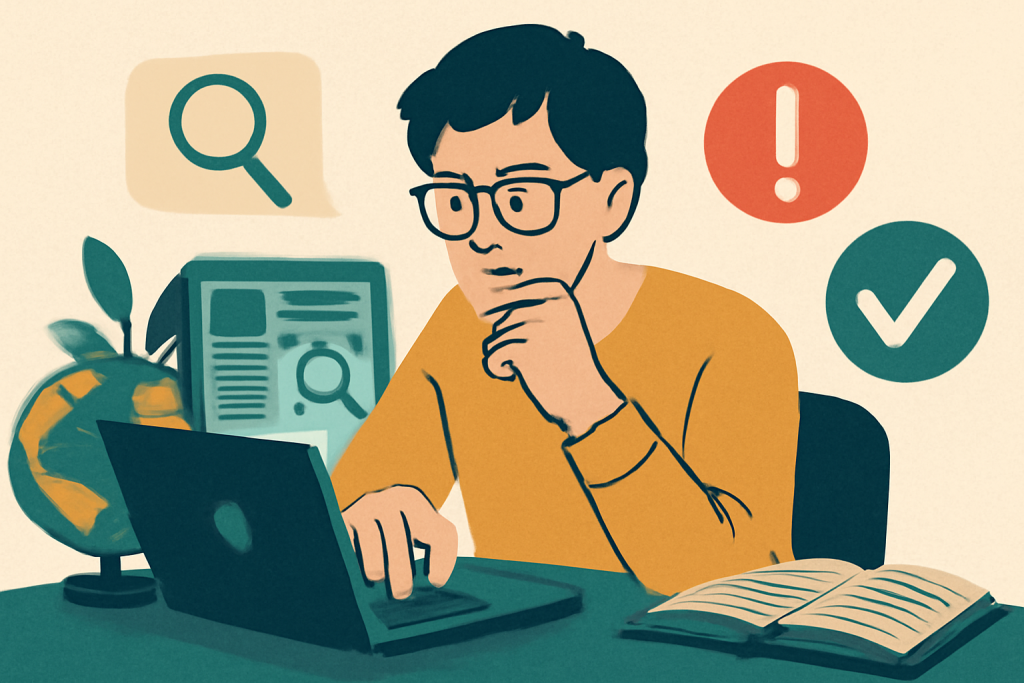Information spreads faster than ever before—but so does misinformation. The ability to identify reliable sources is essential for anyone looking to navigate news, health advice, and online content responsibly. Whether you’re researching important topics or simply browsing headlines, knowing how to evaluate information critically can protect you from false claims and help you make informed decisions.
This article explores the key strategies for recognizing trustworthy sources, highlights emerging trends in the fight against misinformation, and provides practical tools for verifying facts in a digital age saturated with conflicting voices.

Why Identifying Reliable Sources Is Critical Today
The internet has transformed the way we access information, making a vast wealth of knowledge available at our fingertips. However, this convenience comes with challenges. Misinformation—false or misleading information spread unintentionally—and disinformation—deliberate falsehoods—have become widespread, especially on social media platforms. These misleading narratives can influence public opinion, impact health outcomes, and even destabilize democracies.
For example, during the COVID-19 pandemic, false claims about vaccines and treatments circulated rapidly, leading to confusion and hesitation that hindered public health efforts (World Health Organization 2023). Such events underscore the importance of how to identify reliable sources in order to avoid being misled.
The Current Landscape: Emerging Trends in Reliable Source Identification
Efforts to combat misinformation have evolved with technology and changing user habits. Some notable trends shaping the way we identify credible sources include:
1. AI-Powered Fact-Checking
Artificial intelligence is increasingly deployed to detect and flag false content automatically. Tools powered by machine learning can analyze the credibility of claims by cross-referencing data from trusted databases and academic journals in real time. For example, OpenAI’s language models and other AI fact-checkers provide users with quick assessments of information accuracy, helping to cut through misinformation overload (Silverman 2024).
2. Greater Transparency in Journalism
Reputable news organizations now emphasize transparency by publishing detailed sourcing notes, corrections policies, and methodology explanations. This helps readers assess the reliability of articles and understand the evidence behind claims. Transparency standards improve accountability and foster trust between media outlets and their audiences.
3. Community-Driven Verification
Platforms like Facebook, Twitter, and Reddit have implemented user reporting mechanisms, where communities help identify misleading or false content. Combined with expert moderation, this crowdsourced approach adds a layer of quality control.
4. Rise of Media Literacy Education
There is a growing movement to educate the public—especially young people—on critical thinking skills and media literacy. Teaching users how to question sources, recognize bias, and verify information equips them to identify reliable sources independently.
How to Identify Reliable Sources: Step-by-Step Guide
Knowing the importance of reliable information is one thing. Applying practical techniques to identify trustworthy sources is another. Here’s a detailed framework anyone can follow:
Step 1: Assess the Source’s Authority and Reputation
- Publisher Credibility: Check if the content comes from a well-established media outlet, academic institution, government agency, or reputable organization. These entities typically have editorial standards and fact-checking protocols. Examples include The New York Times, BBC, CDC, or academic publishers.
- Author Credentials: Look for authors who are experts in the subject area. Academics, professionals, or experienced journalists are generally more reliable than anonymous writers or unknown bloggers. Author biographies can reveal qualifications and affiliations.
- Website Quality: Professional design, proper citations, and clear contact information often indicate legitimacy. Beware of sites with excessive ads, pop-ups, or sensationalist language.
Step 2: Look for Supporting Evidence
Reliable sources back up claims with data, references, or links to studies. When an article cites peer-reviewed journals, government reports, or statements from recognized experts, it adds weight to its credibility. Avoid content that makes sweeping claims without any evidence or relies on anecdotal stories.
Step 3: Evaluate Content Objectivity and Tone
- Balanced Reporting: Trustworthy sources present multiple perspectives or acknowledge uncertainty instead of pushing a one-sided agenda.
- Avoid Sensationalism: Headlines or articles that use extreme language to provoke emotion (e.g., “shocking,” “miracle cure”) often sacrifice accuracy for clicks.
- Fact vs. Opinion: Distinguish news reports from opinion pieces or editorials. While opinions can be valuable, they reflect subjective views rather than facts.
Step 4: Cross-Check with Multiple Sources
If a claim is important, verify it by checking other reputable outlets. Consistency across independent sources suggests reliability. For contentious issues, consult fact-checking websites such as Snopes, FactCheck.org, or PolitiFact, which specialize in debunking falsehoods.
Step 5: Check Dates and Timeliness
Information can become outdated quickly, especially in fast-moving fields like health or technology. Always verify publication dates and look for the most current data or analysis to avoid relying on obsolete facts.
Step 6: Understand Your Own Biases
Everyone has cognitive biases that may influence what information they accept. Confirmation bias can cause you to favor sources that agree with your preexisting beliefs. Being aware of this tendency helps maintain an open mind and encourages seeking diverse viewpoints.
Hot Topic Focus: Identifying Reliable Health Information Online
Health misinformation has become particularly pervasive, with consequences ranging from vaccine hesitancy to harmful home remedies. According to the CDC, nearly 70% of adults report difficulty distinguishing reliable health information online (CDC 2024). Here’s how to apply the source-identification framework specifically to health topics:
- Prioritize Official Health Agencies: Websites like the Centers for Disease Control and Prevention (CDC), World Health Organization (WHO), and National Institutes of Health (NIH) are trusted sources for up-to-date health information.
- Review Scientific Studies Carefully: When health claims cite research, verify that the studies are published in peer-reviewed journals and check the sample size, methodology, and potential conflicts of interest.
- Beware of “Miracle” Cures: Any product or treatment promising quick fixes or guaranteed results without scientific backing should be approached with skepticism.
- Consult Healthcare Professionals: For personal health decisions, rely on licensed medical providers rather than solely on online content.
Recommended Tools and Resources for Fact-Checking
To assist in evaluating information, the following digital tools and platforms offer reliable verification options:
- Google Scholar: Access a comprehensive database of academic articles and research papers for deep dives into scientific topics.
- Media Bias/Fact Check: An online database rating news outlets on their factual reporting and political bias, helping users choose balanced sources.
- NewsGuard: A browser extension that provides credibility ratings and background info for thousands of websites.
- Fact-Checking Websites: Snopes, FactCheck.org, and PolitiFact specialize in verifying popular claims and debunking falsehoods.
- AI Tools: Emerging AI-driven assistants can cross-check information quickly against reliable databases and flag dubious content (Silverman 2024).
Conclusion: Cultivating Critical Information Literacy in the Digital Age
In the age of misinformation, mastering how to identify reliable sources is a vital life skill. By scrutinizing source credibility, examining evidence, cross-checking facts, and remaining aware of biases, you can navigate information confidently and avoid being misled.
This skill not only protects you from false claims but also contributes to a healthier information ecosystem, empowering society as a whole. The digital age demands constant vigilance—by applying these practical steps and leveraging modern tools, you can stay informed with accuracy and clarity.
References
- World Health Organization (WHO) (2023) Managing the COVID-19 infodemic: Promoting healthy behaviors and mitigating harm from misinformation and disinformation. Available at: https://www.who.int/news/item/23-04-2023-managing-covid19-infodemic (Accessed: 28 May 2025).
- Silverman, C. (2024) ‘The Rise of AI Fact-Checking: How Artificial Intelligence is Changing Misinformation Detection,’ TechCrunch. Available at: https://techcrunch.com/2024/04/15/ai-fact-checking-misinformation (Accessed: 28 May 2025).
- Pew Research Center (2023) Public Trust in News and Information. Available at: https://www.pewresearch.org/journalism/2023/10/01/public-trust-in-news (Accessed: 28 May 2025).
- Centers for Disease Control and Prevention (CDC) (2024) Health Literacy and Online Information. Available at: https://www.cdc.gov/healthliteracy/online-info.html (Accessed: 28 May 2025).






